#tshivenda
Text
I don't know if people put intros on langblr but here is mine,
Native: Xitsonga
Also speaks: English
Learning: Kiswahili, Mandarin Chinese
Planning to learn: Sepedi, Spanish, Tshivenda
Interested: Lingala, Igbo, Chishona, Siswati, Makhuwa, French, Portuguese
#langblr#swahili#mandarin#sepedi#spanish#tshivenda#lingala#igbo#chishona#siswati#makhuwa#french#portuguese
11 notes
·
View notes
Note
Friend, do you have a fun fact in these fridaily times?
Way to get ahead of the game man! Usually, I'm not that awake for a long time before starting work on Fridays, so I don't have time to answer this early in the morning. But today is your lucky Friday, because I woke up at some obscene hour for reasons unknown.
Anyhow! Today You Learned about South Africa's capitals and official languages.
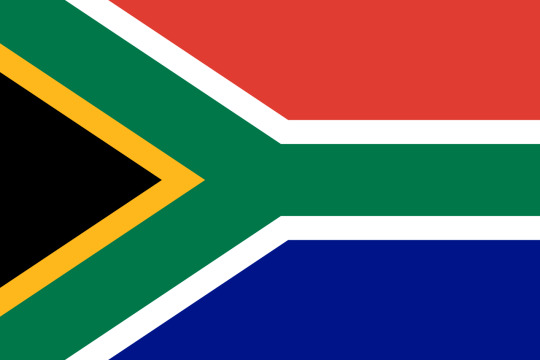
When I was in elementary school, we had a project where each member of the class had to pick a country and do a presentation on it, complete with food. This included the capital and official language. And I when I picked South Africa, I was happy to report that the country I selected had eleven official languages.
Teacher: Well, yes, they have a lot of languages, but what are the official ones? There can only be one or two.
Me: NOPE! They have eleven.
Welp, Wikipedia lists twelve languages, including South African Sign Language, but I'm looking at their constitution and it seems to only list, as I suspected, eleven official languages. (Only eleven. Wow. That's still a lot.)
That's a lot! And according to their constitution, their official languages are!:
The official languages of the Republic are Sepedi, Sesotho, Setswana, siSwati, Tshivenda, Xitsonga, Afrikaans, English, isiNdebele, isiXhosa and isiZulu.
I believe that isiXhosa is the language spoken in Wakanda in the Marvel Cinematic Universe, as the actor playing T'Chaka could speak it. Which is, um, odd, considering that yes, it's an African language, but it's from another part of the continent than Wakanda (admittedly, a fictional country) is supposed to be. It'd be like if a fictional country near Scandanavia spoke Spanish.
Anyhow, South Africa also has three capitals! One for each branch of government: Cape Town, for the legislative branch, Bloemfontein for the judicial branch, and Pretoria for the executive branch!
So now you know.
4 notes
·
View notes
Text
Financial Woes Continue: Muvhango Cast and Crew Unpaid Again
New Post has been published on https://www.celebgossip.co.za/entertainment-news/40501-financial-woes-continue-muvhango-cast-and-crew-unpaid-again.html
Financial Woes Continue: Muvhango Cast and Crew Unpaid Again

Financial Troubles Plague Muvhango Cast and Crew as Non-Payment Continues The popular SABC2 Tshivenda soapie, Muvhango, is facing ongoing financial issues, with reports indicating that actors and crew members have once again not received their payments. Despite being on a production break, individuals involved in the show claim that they have not been compensated for […] Read more on Financial Woes Continue: Muvhango Cast and Crew Unpaid Again
0 notes
Link
0 notes
Photo

Aa! Tshivenda tshiri “Nwana asa lili ufela ngozwini “ Can you kindly help me promote my small hustle . You can never go wrong with the Royalty Chillies ,Ndi amba TSHIDIFHISI For more information: 0729378243 Or here on facebook Instagram: @candysinthumule 😻 https://www.instagram.com/p/CnQ5vRkq7Rw/?igshid=NGJjMDIxMWI=
0 notes
Text
Best online books websites in uae - Dr Irene Matodzi Mawela - The Trailblazer

Dr Irene Matodzi Mawela is a singer, musician, music author, arranger, composer and producer. She is a pioneer. She is the first artist whose Tshivenda music became famous on record and radio. Other Vhavenda artists followed in her footsteps.Dr Mawela is a natural born musician; she is not taking chances. Her voice is anointed, beautiful. Her music is well organized, well-composed and melodious. This is a gift from God. We know that some of the musicians go to school to learn music, but Dr Mawela was born an exceptional musician. She is not an ordinary artist; she is one talented artist. It was no wonder when we heard that the University of Pretoria has awarded her a doctorate in music. She has received many awards for her achievements in the music industry.She is one of those women who advanced first in the music industry and not only in Venḓa but in South Africa as well. She is counted amongst giants, trailblazers in the music industry.
Buy now
Visit our website - www.booksvenue.com
0 notes
Text
Wir teilen die interessantesten Fakten über Südafrika, die wir auf unserer zweiwöchigen Reise in dieses faszinierende Land gesammelt haben
Südafrika ist nicht zuletzt ein Land der Widersprüche. Diese „Regenbogennation“ feiert angeblich den Multikulturalismus, hat aber eine lange und dunkle Geschichte der Rassentrennung. Es ist Teil des größten Naturschutzgebietes der Welt und bleibt dennoch eine Brutstätte der Wilderei. Es hat eine hohe Mordrate, ist aber das einzige Land der Welt, das seine Atomwaffen freiwillig abgebaut hat.
Unnötig zu erwähnen, dass Südafrika mit all seinen Macken und Launen ein absolut faszinierendes Land ist. Wir teilen die interessantesten Fakten, die wir auf unserer zweiwöchigen Reise von Kapstadt nach Jo'burg gelernt haben.
Interessante Fakten über Südafrika
Südafrika hat drei Hauptstädte: Pretoria ist die offizielle Hauptstadt und das Verwaltungszentrum, Kapstadt ist die Hauptstadt der Gesetzgebung und Bloemfontein ist die Hauptstadt der Justiz. (Quelle: CIA World Factbook)
Südafrika hat 11 Amtssprachen: isiZulu, isiXhosa, Afrikaans, Sepedi, Setswana, Englisch, Sesotho, Xitsonga, siSwati, Tshivenda und isiNdebele. (Quelle: CIA World Factbook)
Von 1948 bis 1991 (43 Jahre) bestimmte das politische System der Apartheid – Herrschaft der weißen Minderheit – jeden Aspekt des Lebens in Südafrika. Im Rahmen dieser Politik trennte die Regierung Schwarze und Weiße, zwang Hunderttausende von Menschen zur Umsiedlung in schwarze „Heimatländer“ und inhaftierte, tötete oder verbannte Gegner. (Quelle: BBC)
Rnkadsgn/Shutterstock Nelson Mandela war der erste schwarze Präsident Südafrikas
Der Anti-Apartheid-Revolutionär Nelson Mandela wurde von der Regierung für 27 Jahre inhaftiert. Er wurde 1990 unter wachsendem nationalem und internationalem Druck und der Angst vor einem rassistischen Bürgerkrieg freigelassen. Vier Jahre später, 1994, wurde er zum ersten schwarzen Präsidenten Südafrikas gewählt. (Quelle: BBC, Britannica)
Eine der charmanteren Tatsachen über Südafrika ist, dass die Vilakazi Street in Soweto die einzige Straße der Welt ist, in der zwei Friedensnobelpreisträger untergebracht waren: Nelson Mandela, der den Preis 1993 gewann, und Erzbischof Desmond Tutu, der 1984 gewann. (Quelle : Guardian, Der Nobelpreis)
Südafrika umfasst zwei Binnenstaaten; es umgibt Lesotho vollständig und Eswatini (Swasiland) fast vollständig. (Quelle: CIA World Factbook)
Atlas & Boots Südafrika ist die Heimat des vom Aussterben bedrohten afrikanischen Pinguins
Südafrika und das benachbarte Namibia sind die Heimat des vom Aussterben bedrohten afrikanischen Pinguins. Die Art ist seit den frühen 1980er Jahren um mehr als 60 % zurückgegangen. (Quelle: Britannica)
In Südafrika treffen sich der Atlantische Ozean und der Indische Ozean entlang der südlichen und südwestlichen Kapküste zwischen Cape Agulhas und Cape Point. (Quelle: The New York Times)
Es ist möglich, in den Bergketten der Drakensberg-Region in Südafrika und im benachbarten Lesotho Ski zu fahren. Tiffindell ist ein beliebter Ferienort und bietet eine Vielzahl von Winteraktivitäten. (Quelle: BBC)
Atlas & Boots Südafrika ist einer der besten Orte der Welt, um Wildtiere zu beobachten
Der Krüger-Nationalpark ist einer der besten Orte der Welt, um wild lebende Tiere zu sehen, einschließlich der fünf großen Wildtiere (Elefanten, Löwen, Leoparden, Nashörner und Büffel). Im Jahr 2002 schloss sich Kruger mit dem Limpopo-Park in Mosambik und dem Gonarezhou-Nationalpark in Simbabwe zusammen, um den Great Limpopo Transfrontier Park zu bilden, der ungefähr so groß ist wie die Niederlande und als das größte Naturschutzgebiet der Welt gilt. (Quelle: Britannica)
In Südafrika leben fast 80 % der Nashörner der Welt. Leider wurde es am härtesten von Wilderern getroffen, wobei jedes Jahr mehr als 1.000 Nashörner getötet wurden. (Quelle: Save The Rhino)
Der ikonische Tafelberg ist eines der New7Wonders of Nature. Mit 1.085 m ist es nicht die Höhe des Berges, sondern
seine Breite, die am beeindruckendsten ist; die kahle, vernarbte Nordwand erstreckt sich über drei Kilometer. (Quelle: New7Wonders)
Alexcpt_photography/Shutterstock Kapstadts berühmter Tafelberg
JRR Tolkien, der berühmte Autor von Der Herr der Ringe und Der Hobbit, wurde 1892 in Bloemfontein in Südafrika geboren. Er verließ das Land mit seiner Familie im Alter von vier Jahren und wuchs anschließend in England auf. (Quelle: Britannica)
Die Karoo-Region in Südafrika enthält den vollständigsten und ununterbrochensten Fossilienbestand des Lebens auf der Erde, von vor etwa 260 Millionen Jahren bis vor 180 Millionen Jahren. Es beherbergt einige der besten Fossilien früher Dinosaurier und war maßgeblich daran beteiligt, das wissenschaftliche Establishment davon zu überzeugen, dass sich Säugetiere aus Reptilien und nicht direkt aus Amphibien entwickelt haben. (Quelle: New Scientist)
Vor ungefähr zwei Milliarden Jahren stürzte ein Meteor von der Größe eines Berges (ungefähr 10 km im Durchmesser) auf die Erde und bildete einen zwischen 180 und 300 km breiten Krater; was heute als Vredefort Dome in Südafrika bekannt ist. Der Aufprall bleibt das weltweit größte bekannte Einzelenergiefreisetzungsereignis. (Quelle: NASA, UNESCO)
Gemeinfrei Der Ursprung des Vredefort Dome ist eine der interessantesten Fakten über Südafrika
Südafrika beherbergt 10 UNESCO-Welterbestätten, darunter Robben Island, wo Nelson Mandela inhaftiert war, und der bereits erwähnte Vredefort Dome. (Quelle: UNESCO)
Eine der ermutigendsten Tatsachen über Südafrika ist, dass es 2006 als fünftes Land der Welt die gleichgeschlechtliche Ehe anerkannte. (Quelle: The New York Times)
Der „Sardinenlauf“ ist eines der größten Meeresereignisse der Welt und findet von Mai bis Juli entlang der Ostküste Südafrikas statt. Die Untiefen sind so groß – 15 km lang und 4 km breit – dass sie sogar aus dem Weltraum gesehen werden können. (Quelle: BBC, National Geographic)
Greg Lecoeur/Fair Use Der Sardine Run ist eines der größten Meeresereignisse der Welt
Die erste menschliche Herztransplantation wurde 1967 im Groote Schuur Hospital in Kapstadt durchgeführt. Das Herz eines 26-jährigen Verkehrsunfallopfers, Denise Darvall, wurde einem 54-jährigen Lebensmittelhändler, Louis Washkansky, transplantiert. Leider starb Washkansky 18 Tage nach der Operation. (Quelle: BBC)
Der berühmte Aktivist Mahatma Gandhi lebte 21 Jahre lang in Südafrika. Es wird gesagt, dass er dort seine politischen Ansichten, Ethik und Politik entwickelt hat, aber er wurde auch für seine Ansichten gegenüber schwarzen Südafrikanern kritisiert. (Quelle: BBC)
Violett/Shutterstock Gandhi verbrachte 21 Jahre in Südafrika
Eine der interessantesten Tatsachen über Südafrika ist, dass es das einzige Land der Welt ist, das freiwillig selbst gebaute und kontrollierte Atomwaffen abgebaut hat. (Quelle: The Atlantic)
Mit 216 m ist die Bloukrans Bridge in Südafrika einer der längsten Bungeesprünge der Welt – ein ganzes Stück länger als Kias Nevis-Bungejump in Neuseeland! (Quelle: CNN)
Lonely Planet Südafrika, Lesotho & Swasiland ist ein umfassender Reiseführer für Südafrika, ideal für diejenigen, die sowohl die wichtigsten Sehenswürdigkeiten erkunden als auch weniger befahrene Straßen wählen möchten.
Hauptbild: Toniflap/Shutterstock
.
0 notes
Text
What Language is Spoken in Johannesburg South Africa?
What Language is Spoken in Johannesburg South Africa?
What Language is Spoken in Johannesburg South Africa? The 11 official languages are isiNdebele, isiXhosa, isiZulu, and siSwati (referred to as the Nguni language group); Sesotho, Sepedi, and Setswana (referred to as the Sotho language group); Tshivenda, Xitsonga, English, and Afrikaans.
Traveling in South Africa can be a headache, especially with the communication and language barriers between…

View On WordPress
#IsiZulu Language in Johannesburg#What Are The Top 4 Languages Spoken In South Africa?#What is the main language spoken in Johannesburg?#What Is The New Name Of Johannesburg?#What Language is Spoken in Johannesburg South Africa?
1 note
·
View note
Text
POSITIONALITY
As people we have have attitudes, perceptions, or beliefs as well as ideas towards other people while we are not aware that they may be influenced by our own identity. “Bias is in all of us and affects us all” ( (Trawinski, 2015). Coming from a certain cultural background , religion, socio-economic status, race and being a particular gender shapes a person in a way that what we believe impacts what we see in this world (Bowen, 2019)We often see people and things in our own lenses unaware that it limits us the opportunity to experience or understand their full view or perspectives as clients. It is important for us to know our positionality to be able to understand things not only through own.

I was born in one of the small villages in Limpopo, Venda. I am a Tshivenda speaking and belong to the Vhavenda culture. I was raised in a Christian background and grew to become independent in the same religion. I am a black female and currently resides in a campus residence at the University student I was born into a low middle socio economic background. My positionality is created by these factors, ethnic group, religion and cultural background , socioeconomic status , education , gender as well as sexual orientation. My identity has been shaped by my experiences while living in the villages and how people come together and make a strong community with only the little resources they have as well as helping each other. Identifying as a black person growing up, it did have an Impact in my life as we always saw whites as better people than us that we would compare good things with whites as though we are not worth or do not deserve any better or ‘good things’.
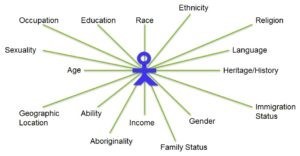
Exposure to education and learning things especially in tertiary education has helped me understand that we are at some point in the same level ( we are people and similar basic needs) regardless of culture, religion, race or ethnicity or tribe or although they also come from different backgrounds that have shaped their positionality. We share similar characteristics as students, and it is up to us to get out of the shell and reach out to be more aware of other people and their positionality instead of using the same instilled understanding by our parents or grandparents who experienced apartheid. It has taught me to be out there and be ready to learn from someone else, to be open to other people’s races, religion regardless of what I believe in. it has helped me understand other people and why they do things a certain way which greatly impact my understanding of clients that may be of similar identities.

Although I come from a low middle socio economic background I had access to education, learnt some qualities and was able to experience the application of ubuntu in my community , regardless of the challenges that I may have encountered such as childhood trauma it still is a great privilege that some people are not able to reach. I sometimes find myself comparing where I come from to the areas we work in community. The priviledge that we may have such as strong family support, better socio economic status and other factors in the background such as accessing materials that promote positive outcomes in your life.

This made me realise that the people or community I work in may not have the same privilege as I have . Some have no parents and are living by themselves , trying to find ways to access basic needs daily. To apply positionality during sessions with the clients as a student therapist firstly I must ensure I understand my own identity, how I should look in the client’s lens, how they are feeling , their experiences daily and how it is shaping they are identity. Some people have lost hope. I should always ensure that I acquire more, educate myself to their cultures their beliefs as well as how they turned out to be, however this should be done after understanding my own identity where I stand as an individual. It may help improve the client’s experience as well as indirectly influence client’s progress.

Working in communities with different people , exposes one to various identities that each day one must ensure that they understand the person/ clients and community as whole. This allows one to not be biased when assessing or treating clients. Understanding a person’s identity, cultural background, family influences , race , geographical area, socio economic status or community they belong to during assessments helps provide a clear picture of the person. This helps avoid focusing on a person’s illness or disability that they may have.
In a community I am working at, as an Occupational therapy student I make sure that I assess a person without focusing only on the illness they have but ask further about their home environment , how they live at home, relationships they have and other social characteristic that occur in a person’s life. This also help identify further parts of the client that are affected by the injury or illness. As we work with people , sometimes it is not only someone with a disability or an illness but a dysfunction in occupations or everyday function that we assess and plan treatment.


Poor communities are often the ones who suffer great injustices in our country where in due to coloniality they experience the oppression (McGeorge, 2010). Our system oppresses low income communities in many different ways. Members of community are left alone , less service delivery and sometimes abandoned as they government sometimes needs “ a wake up call “ to address the issues occurring in communities. This is where diseases and more health issues arise as there is less attention occurring. https://time.com/longform/south-africa-unequal-country/
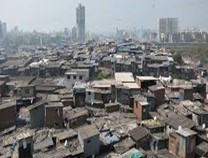
This makes me think about the people we see in streets everyday in the community, client’s who come in for therapy and how vulnerable they are , all age groups as they all experience similar things .It is important to sit and listen to a person/ client , experiences they have and the current happenings in his/her life.
In communities , working in projects it is important to include the community members in planning and implementation. This requires their ability to understand the importance of the project and its significant in their lives. I also find that it is important for me as a therapist to consider the main issues in the communities ,that they are still tackling poverty, looking forward for employment, better health care provision and other factors. Bringing projects to the community while understanding their positionality gives a clear picture of what could be more beneficial to the community. This allows us to see through the lens of the community and its people . We are from outside the community and involving the people to implementation or imagining projects.
References
Bowen, Y. (2019, february 10). Your Sense of Identity Determines Your Worldview. Retrieved from The Good men Project: https://goodmenproject.com/featured-content/your-sense-of-identity-determines-how-you-perceive-the-world-vnmr/
McGeorge, C. R. (2010). Social Justice Mentoring: Preparing Family Therapists for Social Justice Advocacy Work. Michigan Family Review, 14(1). doi: http://dx.doi.org/10.3998/mfr.4919087.0014.106
Trawinski, C. (2015, september 04). No one is immune from bias, not even us therapists! Everyone has bias. Retrieved from LifeWorks Psychotherapy centre : https://www.lifeworkspsychotherapy.com/when-your-therapist-has-a-bias/#:~:text=Therapist%20bias%2C%20as%20we%20define,aspects%20of%20that%20person's%20experience.
https://courses.lumenlearning.com/suny-realworldcomm/chapter/8-1-foundations-of-culture-and-identity/
https://www.mitemmc.org/monthly-tips/positionality-intersectionality-and-privilege-in-health-professions-education-research/
0 notes
Quote
South Africa has 11 official languages: Zulu, isiXhosa, Afrikaans, Sepedi, Setswana, English, Sesotho, Xitsonga, Siswati, Tshivenda and Ndebele. Many black South Africans are reluctant to use Afrikaans. The elite university, Stellenbosch, came under fire in 2015 for using Afrikaans in lectures, with some students saying they struggled in classes because of it. In 2021, the university announced its recommitment to a multilingual language policy, including Afrikaans, English and isiXhosa.
‘Ryanair Afrikaans test: South African fury over language quiz’, BBC
#BBC#Ryanair#South Africa#Afrikaans#Zulu#isiXhosa#Sepedi#Setswana#English#Sesotho#Xitsonga#Siswati#Tshivenda#Ndebele#black South Africans#Stellenbosch University
16 notes
·
View notes
Photo

Beautiful and Graceful @vendadresscode @kundzzgp ❤ African Fashion? Then the AfriqOkin app is perfect for you! Click the link below For More information 👉🏾http://onelink.to/dut9rz #afriqokin #AfricanFashionApp #AfricanFashion #AfricanPrint #AsoEbi #bellanija #lindaikeji #asoebibella #Venda #vendadresscode #vendadress #Tshivenda #Vendaculture #Nwenda #Minwenda #Munwenda #vendatradition #vendaqueen #vendaculture #vendaattire https://www.instagram.com/p/CY1XVcPoKzo/?utm_medium=tumblr
#afriqokin#africanfashionapp#africanfashion#africanprint#asoebi#bellanija#lindaikeji#asoebibella#venda#vendadresscode#vendadress#tshivenda#vendaculture#nwenda#minwenda#munwenda#vendatradition#vendaqueen#vendaattire
1 note
·
View note
Photo

Tshivenda (Minwenda) LUFUNO @lufunolove @_msbrownstyling CELEBRITY SYLIST FASHOIONISTA INFLUENCER #Tshivenda #lufuno #vendaheritage #illustrations #africanart #queen https://www.instagram.com/p/B2ysXR6j5s9/?igshid=czn7yj3yd6x4
0 notes
Photo



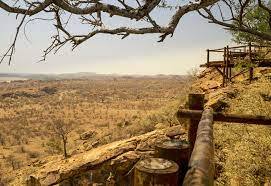



The Kingdom of Mapungubwe (or Maphungubgwe) (c.1075–1220) was a medieval state in South Africa located at the confluence of the Shashe and Limpopo rivers, south of Great Zimbabwe. The name is derived from either TjiKalanga and Tshivenda. The name might mean "Hill of Jackals". The kingdom was the first stage in a development that would culminate in the creation of the Kingdom of Zimbabwe in the 13th century, and with gold trading links to Rhapta and Kilwa Kisiwani on the African east coast. The Kingdom of Mapungubwe lasted about 80 years, and at its height the capital's population was about 5000 people.
This archaeological site can be attributed to the BuKalanga Kingdom, which comprised the Kalanga people from northeast Botswana and western Zimbabwe, the Nambya south of the Zambezi Valley, and the Vha Venda in the northeast of South Africa. The Mapungubwe Collection of artifacts found at the archaeological site is housed in the Mapungubwe Museum in Pretoria.
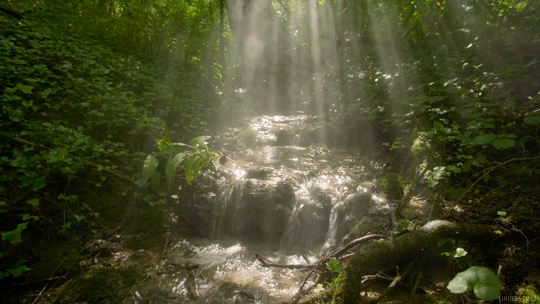
The largest settlement from what has been dubbed the Leopard's Kopje culture is known as the K2 culture and was the immediate predecessor to the settlement of Mapungubwe. The people of the K2 culture, probably derived from the ancestors of the Shona and Kalanga people of southern Africa, was attracted to the Shashi-Limpopo area, likely because it provided mixed agricultural possibilities.The area was also prime elephant country, providing access to valuable ivory. The control of the gold and ivory trade greatly increased the political power of the K2 culture. By 1075, the population of K2 had outgrown the area and relocated to Mapungubwe Hill

The capital of the kingdom was called Mapungubwe, which is where the kingdom gets its name.
There is controversy regarding the origin and meaning of the name Mapungubwe. Conventional wisdom has it that Mapungubwe means "place of jackals," or alternatively, "place where jackals eat", thavha ya dzi phunguhwe, or, according to Fouché—one of the earliest excavators of Mapungubwe—"hill of the jackals" (Fouché, 1937 p. 1).
It also means "place of wisdom" and "the place where the rock turns into liquid"—from various ethnicities in the region including the Pedi, Sotho, Venda and Kalanga.
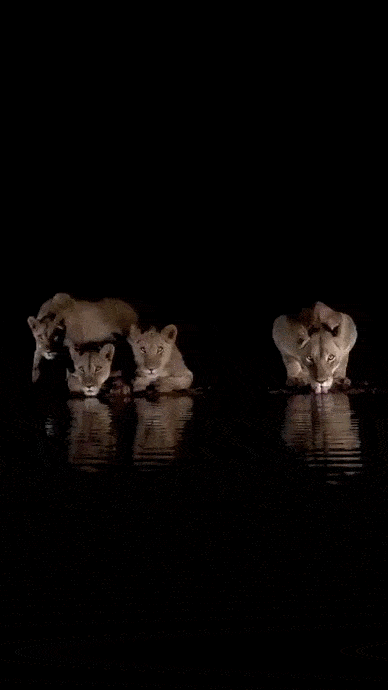
Mapungubwean society is thought by archaeologists to be the first class-based social system in southern Africa; that is, its leaders were separated from and higher in rank than its inhabitants. Mapungubwe's architecture and spatial arrangement also provide "the earliest evidence for sacred leadership in southern Africa".
Life in Mapungubwe was centred on family and farming. Special sites were created for initiation ceremonies, household activities, and other social functions. Cattle lived in kraals located close to the residents' houses, signifying their value.
Most speculation about society continues to be based upon the remains of buildings, since the Mapungubweans left no written record.
The kingdom was likely divided into a three-tiered hierarchy with the commoners inhabiting low-lying sites, district leaders occupying small hilltops, and the capital at Mapungubwe hill as the supreme authority. Elites within the kingdom were buried in hills. Royal wives lived in their own area away from the king. Important men maintained prestigious homes on the outskirts of the capital. This type of spatial division occurred first at Mapungubwe but would be replicated in later Butua and Rozwi states. The growth in population at Mapungubwe may have led to full-time specialists in ceramics, specifically pottery. Gold objects were uncovered in elite burials on the royal hill (Mapungubwe Hil
#kemetic dreams#mapungubwe#kingdom of mapungubwe#south africa#south african#african#africans#african civilization
245 notes
·
View notes
Link
0 notes
Photo

names inspired by: taurus
this list includes names inspired by the planets, stars, colours, characteristics and traits that lead and define those born under the taurus sign.
Alda: German, meaning "old, prosperous"
Alu: Tshivenda, meaning “be prosperous”
Aphra: Hebrew, meaning “dust, of the earth”
Avani: Indian origin, meaning “of the earth”
Aviva: Hebrew, meaning “spring, youth, innocence”
Bartlett: Hebrew, meaning “worker of the land”
Cashel: Irish, meaning “castle, stone fortress”
Charra: Gaelic, meaning “large stone or rock”
Clay: English, meaning “fine-grained earth”
Constance: Latin origin, meaning “being faithful and dependable”
Constantine: French/Latin origin, meaning “steadfast”
Darius: Persian, meaning “rich and kingly”
Dhara: Hindi, meaning “the earth”
Diamond: Greek origin, meaning “invincible, untamed”, also the birthstone of April
Durand: Latin, meaning “strong and enduring”
Eartha: English, meaning “worldly”
Emerald: Persian, meaning “green”, also the birthstone of May
Ethan: Hebrew, meaning “strong, enduring, firm and long-lived”
Gaia: Greek, meaning “earth goddess/earth mother”
Glen: Gaelic origin, meaning “valley”
Gresham: Old English origin, meaning “grassland”
Haruko: Japanese, meaning “spring child”
Hermione: Greek, meaning “messenger, earthly”
Iden: English, meaning “from the marshy pasture”
Isa: German/Persian, meaning “strong-willed”
Jahan: Persian, meaning “world” or “universe”
Jasper: Persian, meaning “treasurer”
Kaj: Danish, meaning “earth” (pronounced kye)
Kenley: English, meaning “royal meadow”
Mirela: Romanian, meaning “peace, world”
Otto: Germanic, meaning “wealth, prosperity”
Patience: English word name, from one of the seven heavenly virtues.
Petra: Greek, meaning “stone, rock”
Poppy: along with Rose, the birth flower of Taurus. intimate and sensuous.
Rasina: Urdu, meaning “calm, composed”
Rhea: the Greek earth mother
Rose: along with Poppy, the birth flower of Taurus. luxurious and classy.
Sabit: Arabic, meaning “firmly in place, unshakable”
Serena: Latin, meaning “calm, tranquil”
Terra: Latin, meaning “earth”. also the Roman goddess of the earth.
Toro: Spanish, meaning “bull”
Venus: the planet that rules the Taurus sign
Vernon: Gaulish/Latin, meaning “springlike, flourishing, full of life”
Wilhelmina: Germanic, meaning “desire to protect”
#rph#rpc#name list#name help#baby names#might as well continue this series 8 months late too kjfgkj#zodiac
60 notes
·
View notes
Photo

The Kingdom of Mapungubwe (or Maphungubgwe) (c. 1075–1220) was a medieval state in South Africa located at the confluence of the Shashe and Limpopo rivers, south of Great Zimbabwe. The name is derived from either TjiKalanga and Tshivenda. The name might mean "Hill of Jackals". #checkoutAfrica #Africa #Africans #africanheritage #everydayafrica #panafrican #southafrica #visiterlafrique #portraitphotography #zimbabwe #limpopo #capetown #joburg #mzansi #OkayAfrica #africanism — view on Instagram https://ift.tt/2FKZe8w
9 notes
·
View notes